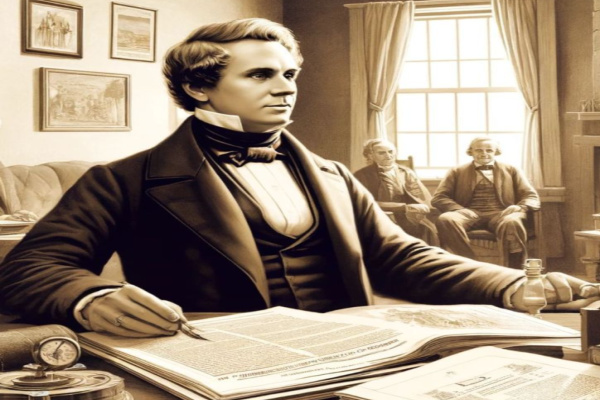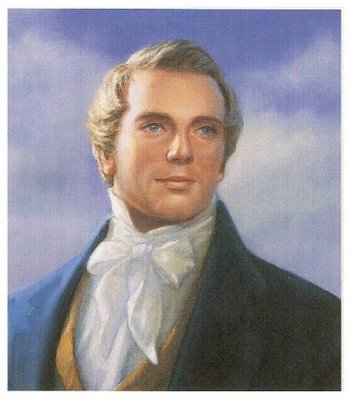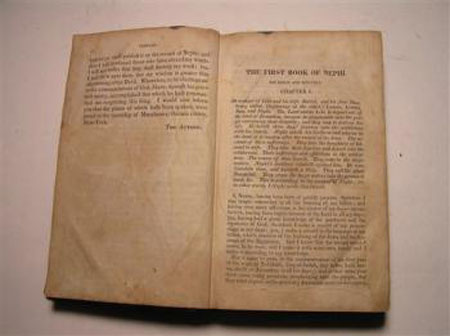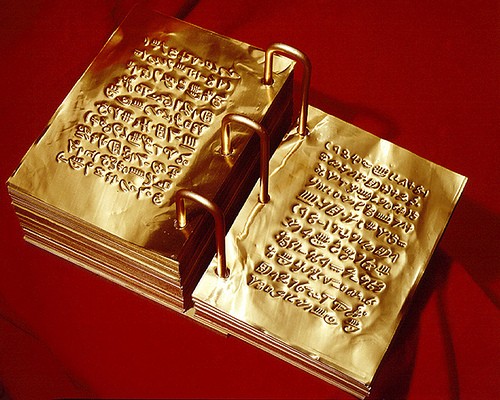Question
Gramps,
Who is the spokesman referred to in 2 Nephi 3:17-18? Is this Joseph Smith or someone speaking on behalf of him?
Bart
Answer
Bart,
The Book of Mormon is a cornerstone of the faith of members of The Church of Jesus Christ of Latter-day Saints, offering profound insights into the nature of God, prophecy, and the Restoration of the gospel. Among its many teachings, 2 Nephi 3 contains a significant prophecy regarding a future spokesman who would emerge from the lineage of Joseph of Egypt.
As we delve into the prophetic words of Lehi, the father of Nephi, we encounter a powerful assertion about the future of God’s covenant people. In 2 Nephi 3:17-18, we find a declaration regarding a spokesman who would arise from the “fruit of thy loins.” This article examines the scriptural context, Joseph Smith’s prophetic role, comparisons with biblical figures, theological implications, and variances in interpretation surrounding this important figure in Latter-day Saint belief.
We must first consider the scriptural context to understand the significance of the spokesman referenced in 2 Nephi 3:17-18. In this chapter, Lehi recounts a prophecy made by Joseph of Egypt concerning a future seer who would descend from his lineage. The verses state:
And the Lord said unto me also: I will raise up unto the fruit of thy loins; and I will make for him a spokesman (2 Nephi 3:17).
This “fruit of thy loins” refers to Joseph of Egypt’s descendants, which includes Joseph Smith in Latter-day Saint belief. The verse emphasizes God’s intention to raise up a leader who would play a crucial role in the restoration of His covenant people.
Joseph Smith is identified in 2 Nephi 3:6 as a “choice seer” who will “bring forth my word” (2 Nephi 3:11). This connection highlights Smith’s divine mission as the prophet tasked with translating the Book of Mormon and restoring the gospel of Jesus Christ (The Church of Jesus Christ of Latter-day Saints, 2017).
Joseph Smith’s role as the spokesman foretold in 2 Nephi 3 is foundational to Latter-day Saint theology. As the prophet of the Restoration, he translated the Book of Mormon, which serves as a vital record testifying of Christ and the covenants made with the house of Israel.
Elder Bruce R. McConkie, in his work “A New Witness for the Articles of Faith,” elaborates on this role, stating that the “spokesman of thy loins [Joseph Smith] shall declare it” (McConkie, 1985, pp. 425-426). This assertion indicates that Smith’s prophetic mission involves both translating the writings of Nephite prophets and proclaiming their messages to the world.
Notably, the comparisons between Joseph Smith and Moses enhance our understanding of Smith’s prophetic calling. Just as Moses was called to lead the children of Israel out of bondage and received divine commandments, Joseph Smith was similarly chosen to lead the Latter-day Saints in the Restoration of the gospel. This parallel is drawn in 2 Nephi 3:9, where Lehi emphasizes the greatness of the seer who will arise from his lineage, akin to Moses’s significant role in biblical history (Gospel Doctrine, n.d.).
The identification of Joseph Smith as the spokesman in 2 Nephi 3 holds profound theological implications for members of The Church of Jesus Christ of Latter-day Saints. It affirms the continuity of divine revelation from ancient prophets to modern leaders, establishing a framework that emphasizes the importance of prophetic authority and ongoing revelation.
Church doctrine teaches that Joseph Smith was foreordained to be the prophet of the last dispensation, tasked with restoring the gospel of Jesus Christ. This belief is rooted in the interpretation of 2 Nephi 3, which emphasizes Smith’s essential role in the latter-day restoration and the translation of the Book of Mormon (Richards, 1983).
Elder Neil L. Andersen has reiterated the significance of Joseph Smith’s prophetic calling, stating, “He was chosen by God to prepare a way for the coming of the Lord” (Andersen, 2014). This reinforces the understanding that Smith’s unique calling aligns with the prophetic traditions established in the scriptures.
While the predominant interpretation among Latter-day Saints is that Joseph Smith is the spokesman mentioned in 2 Nephi 3:17-18, some discussions have explored the potential for other individuals to fulfill this role. For example, figures like Oliver Cowdery or Sidney Rigdon have been suggested as possible spokesmen due to their involvement in the Restoration and their close associations with Joseph Smith.
Oliver Cowdery, for instance, served as Smith’s principal scribe during the translation of the Book of Mormon and was described in the Doctrine and Covenants as possessing the gift of Aaron, thus acting as a spokesman (Doctrine and Covenants 100:9). However, the consensus within mainstream Church teachings remains that Joseph Smith’s distinctive calling as the prophet aligns most closely with the attributes described in 2 Nephi 3.
This exploration of alternative interpretations highlights the richness of Latter-day Saint theology and the diverse perspectives that can contribute to our understanding of prophetic roles and functions. Still, the identification of Joseph Smith as the spokesman resonates most strongly with the teachings and beliefs of the Church.
In conclusion, the prophecy found in 2 Nephi 3:17-18 offers a clear identification of Joseph Smith as the spokesman who would arise from the lineage of Joseph of Egypt. This understanding is rooted in scriptural context, prophetic teachings, and theological implications that affirm the continuity of divine revelation through modern prophets. As members of The Church of Jesus Christ of Latter-day Saints, recognizing Joseph Smith’s vital role in the Restoration of the gospel enriches our faith and deepens our understanding of God’s ongoing work among His people.
Gramps







